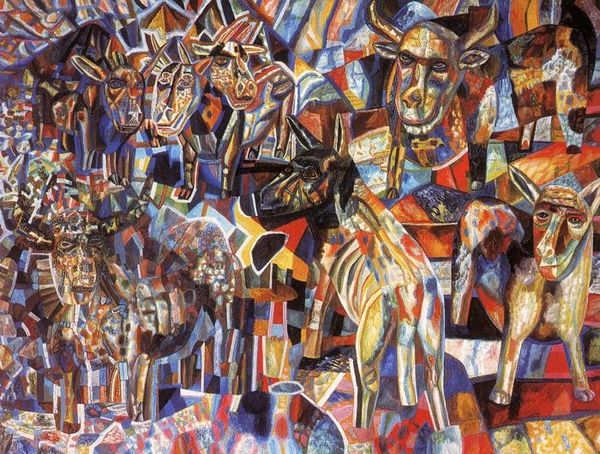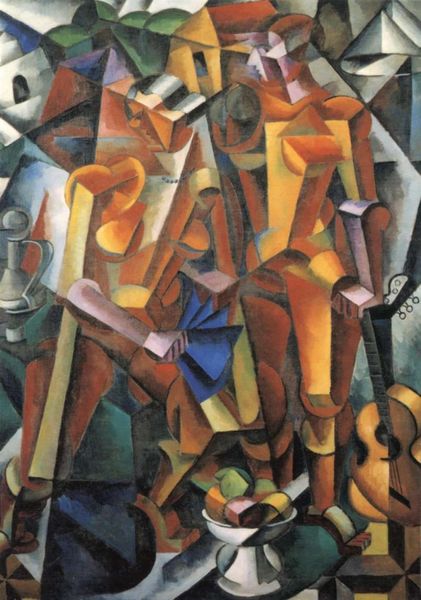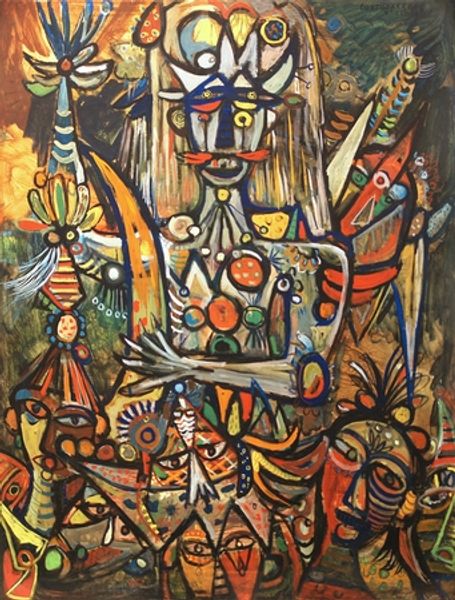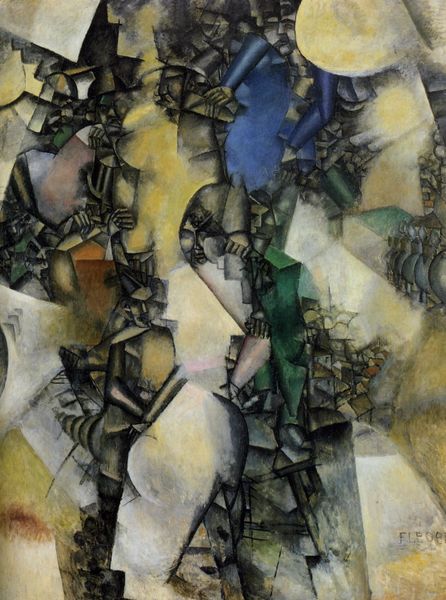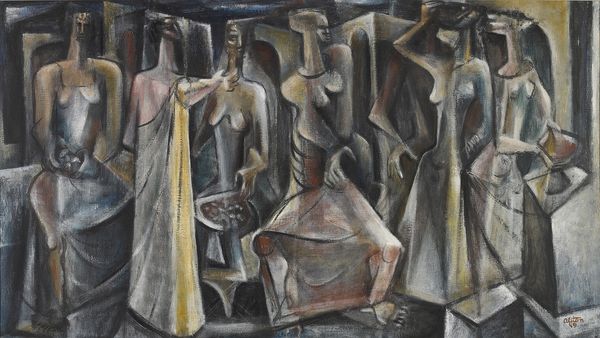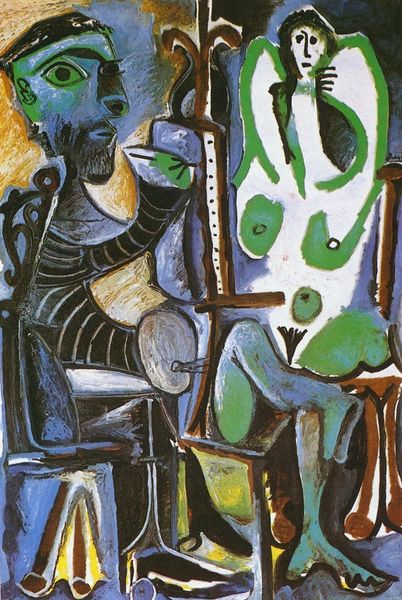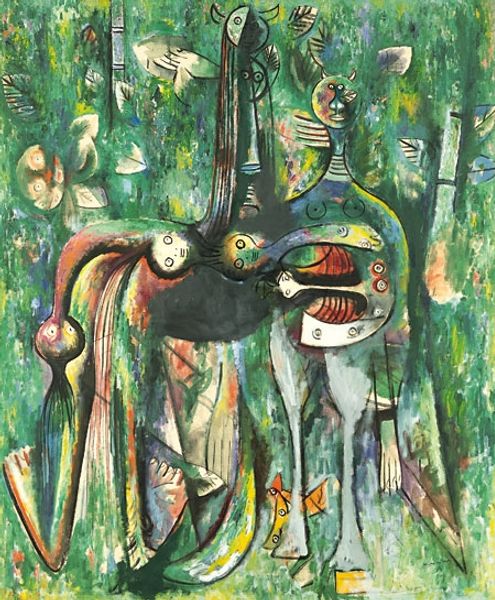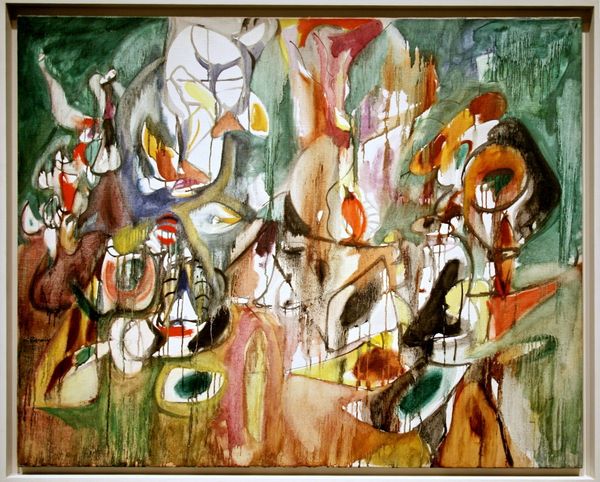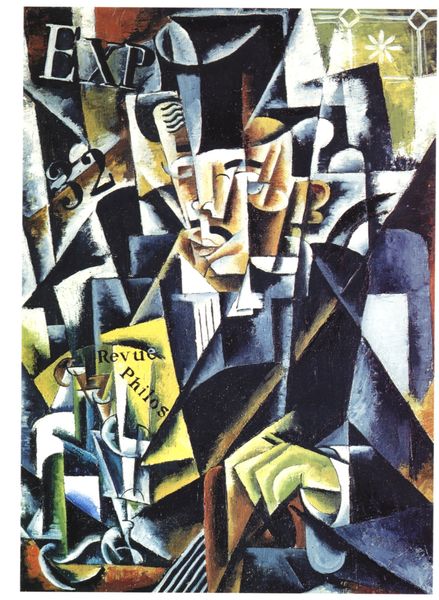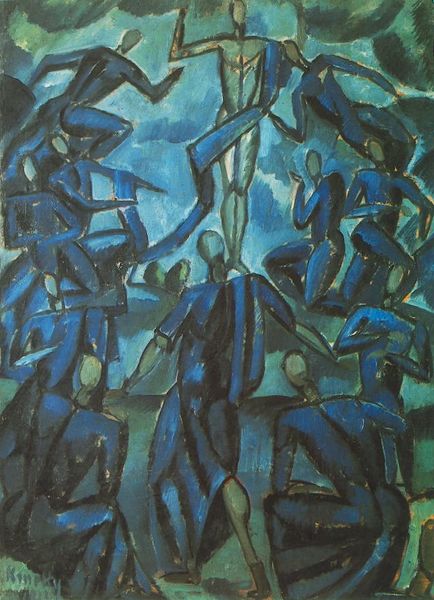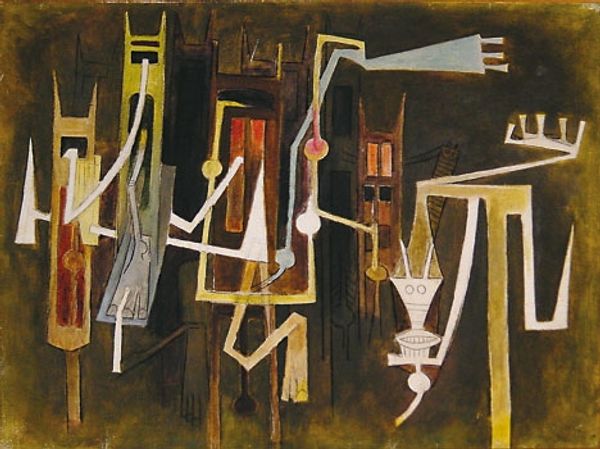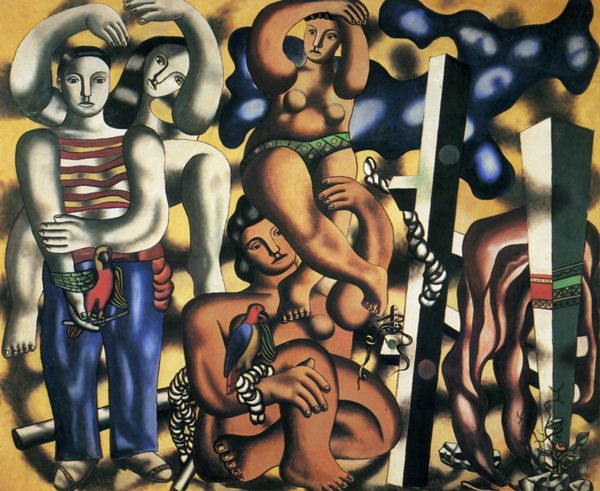
mixed-media, painting, oil-paint
#
african-art
#
cubism
#
mixed-media
#
organic
#
painting
#
oil-paint
#
landscape
#
figuration
#
surrealism
#
modernism
Dimensions: 239 x 229 cm
Copyright: Wifredo Lam,Fair Use
‘In this way I could act as a Trojan horse that would spew forth hallucinating figures with the power to surprise, to disturb the dreams of the exploiters.’ – Wifredo Lam Wifredo Lam (1902-1982) is perhaps Cuba’s most famous painter. After working in Paris throughout the late 1930s, he returned to his homeland at the outbreak of war in 1941. It was in Cuba that he painted his most renowned work, La Junga (The Jungle), 1943. The painting is a dense and claustrophobic composition of abstract shapes, figures, and faces. It depicts four elongated figures standing in a forest of sugar canes. The background and bodies are painted in the same palette of greens and blues; it is almost impossible to distinguish the figures from the sugar canes which surround them. 🎋 The Jungle is a huge painting, measuring almost 8 feet both vertically and horizontally. Imagine standing before the painting. It overwhelms the viewer’s field of vision, forcing them to look upwards. The impression is powerful and unsettling. Lam desired to have an intense impact on his viewers. His paintings are politically charged and intended to disturb Western audiences. In The Jungle, the artist’s use of Afro-Caribbean imagery is clear. The appearances of the four figures evoke the animal masks traditionally used in African ceremonies. These masks were included in paintings by European modernists such as Pablo Picasso and Amedeo Modigliani. Here, however, Lam reclaims these symbols to criticise the exploitation of Cuba by Western authorities. His inclusion of sugarcane plants is significant, speaking to the unfair treatment of Cuban plantation workers for Western profit. This painting is bursting with bold details and powerful energy. How do you think the original viewers would react to it? 🎋💬 Editor: Lucy Jude Grantham #
Comments
No comments
Be the first to comment and join the conversation on the ultimate creative platform.

